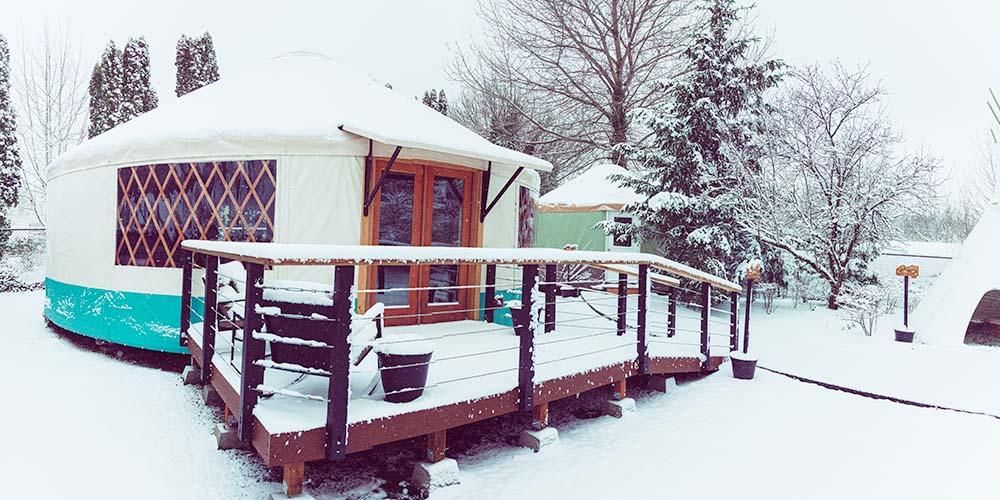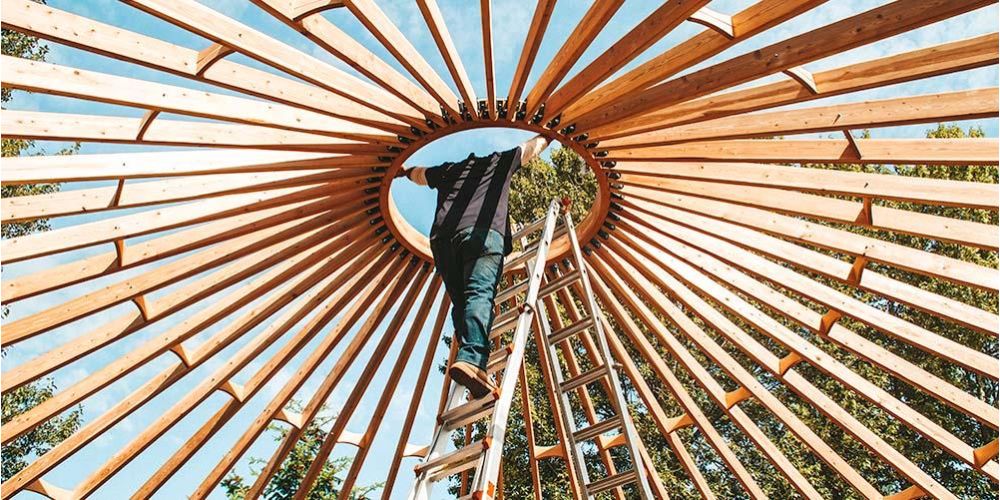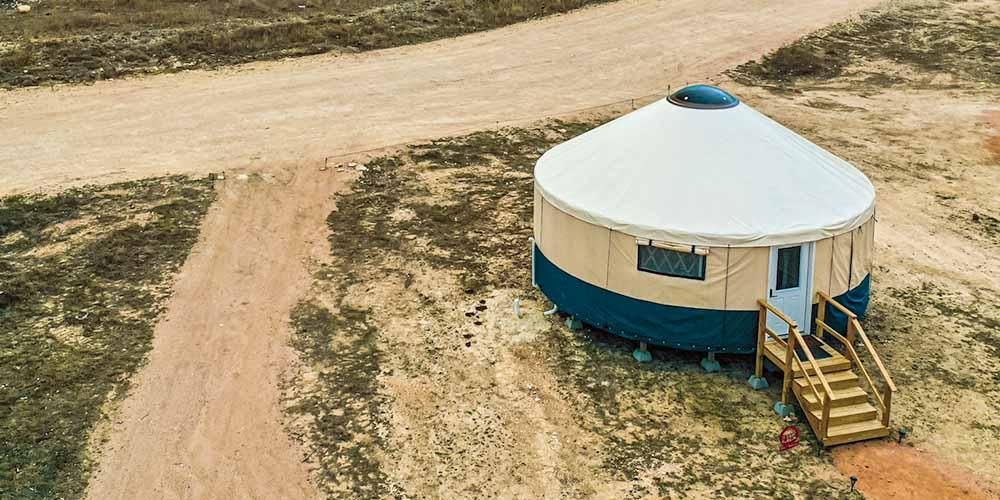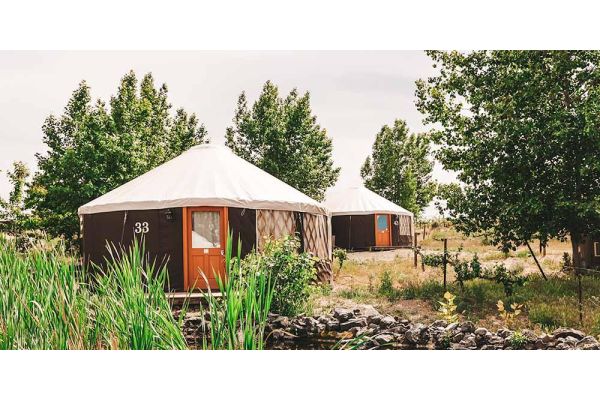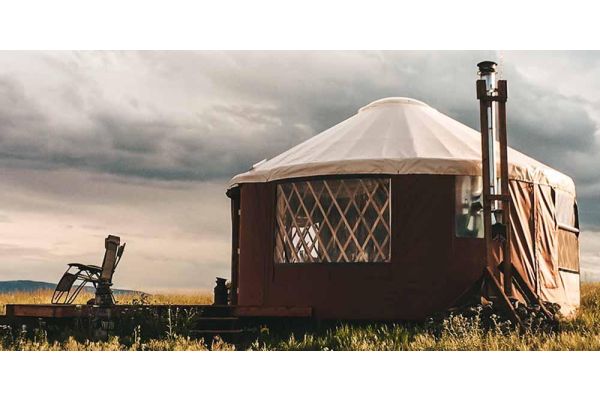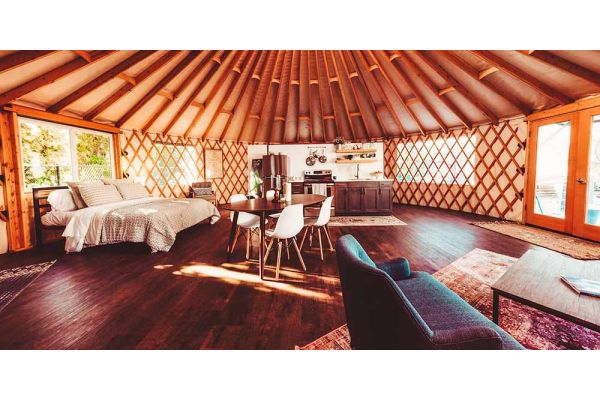Yurt Permits and Building Guidelines
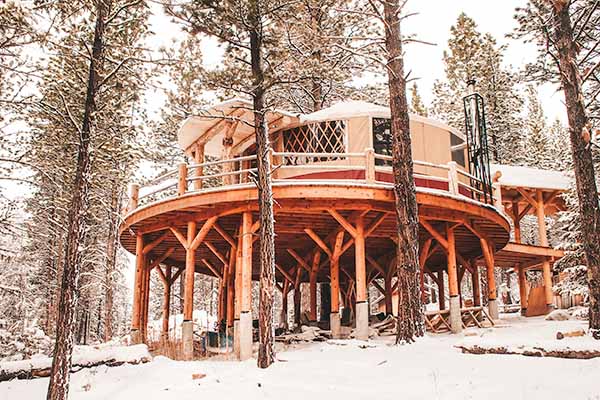

Following codes and regulations for yurt construction ensure you have included basic safety features. That might feel rather logical but in the excitement of the build, they can be easily forgotten! Why would you want to consider regulations before your construction? And where do you look to find these permits and building regulations? Below is a look at the importance of mulling over yurt codes and regulations before you start your dream yurt home construction.
So you did it!
You made the decision. Your dream home a brand new Rainier Outdoor yurt, and you can't wait to start construction. While this can be intimidating, we are here to help, let's do this together. I spoke with Mike, the Building Inspector for Coos Bay, Oregon, about what he looks for when permitting a yurt. He was incredibly helpful with snow load information and enthusiastic about yurts. So, don’t be afraid to just call the nearest building inspector to where you plan to build. They have lots of valuable information to help you before you start. Believe me, inspectors take no joy in Red Tagging your new home. You're smart, so give them a call, and get a good idea of what it takes to make a happy safe Yurt house.


Books
First, I would like to thank Becky Kemery for her dedication and knowledge in the round world of yurts. Becky is the author of YURTS: Living in the Round. She is the ultimate guru and forerunner of living in yurts as homes. She spent many years living in the mountains of the American Northwest in a cloth yurt. In her book, YURTS: Living in the Round, she expounds on yurts, life experiences, and her adventures. Last week I spoke with Becky Kemery, about codes and yurts. Her book was completed while living in her portable fabric yurt on a permaculture homestead in Northern Idaho. Her website, Yurtinfo.org, is a vat of knowledge and enjoyable details. Becky's website is a comprehensive educational source on yurts, providing information and inspiration. It is an indispensable destination for information, joining in the worldwide yurt community, and making connections.
Becky's book, Yurts: Living in the Round, is front and center in my bookcase, I read from it quite often. She has done such an excellent job researching and living this lifestyle that we agreed that it didn't make sense for me to recreate the wheel and rewrite it. Again, a huge thank you to my new friend Becky!
Codes and Regulations for Yurt Construction


I wanted to thank Becky for giving us the permission to share with you excerpts from her book Yurts: Living in the Round, pp. 96-97 and Appendix I.
One of the most complicated issues people face in using yurts as either a home or work space involves the building permit process. Code requirements vary from state to state and within counties and local communities. Individual officials, even within the same locale, may interpret the rules differently. Add to this the fact that many code officials have little or no experience with yurts, and the situation can become very confusing.
Before you buy a yurt, it's a good idea to check with your local Building Department to see what the codes and regulations are for yurt construction in your area and how local officials are likely to respond to your particular yurt application. (The building department may be contained within your local Planning Department, or it may be connected to another office like the Fire Dept.) You also may need to check with your local Health Department regarding septic or sewer issues.
Here are some questions to ask your local officials:
- Which set of code regulations is the department using? Do they have permits and building guidelines specific to yurts? Are they using the 2003 or 2006 ICC (International Code Council) codes, or are they still using the UBC (Uniform Building Code)? The two ICC rule books are: the residential IRC (International Residential Code) and the commercial IBC (International Building Code). The IBC is more comprehensive than the IRC and supersedes the IRC in the case of conflict.
- What are the local planning regulations (these vary per jurisdiction).
- What are the specific local requirements for snow load, seismic rating, and wind speed? Are there any other special requirements?
- What are the fire-rating requirements (for the insulation and outer fabric)?
- Has the department previously approved yurts in this city or county? If so, which manufacturers have been approved?
- If the building department hasn't previously worked with yurts (or with your prospective company), is there a licensed engineer to whom your company can send engineering specs for review?
- Would it be helpful to have contact information for building officials in other places where yurts have been approved?
Here are some things to keep in mind as you go through the permitting process:
As a membrane structure, yurts are usually classified in the "alternative structures" category, which has a unique set of code regulations. (See "Building Code Excerpts" section below.)
If your yurt is classified as a permanent or long-term alternative structure, it will have to meet local requirements for snow load, wind speed, and seismic ratings. You will also have to show that the yurt materials are fire retardant. If your yurt is being set up as temporary structure, for six months or less, the requirements codes and regulations for yurt construction are much more flexible.


Local stipulations vary. For example, a town might have a snow-load requirement of twenty-five pounds per square foot, and the nearby ski resort could have a requirement of one hundred pounds per square foot. When you talk with your yurt company, you might find that their standard snow and wind kit would work for the in-town requirement, and that for the ski resort you would need to purchase a yurt that had been specifically engineered for heavier snow loads.
If your yurt will be used for residential purposes, it will also have to meet local regulations for residences (like heat source, size and type of openings, egress windows in sleeping areas, and so on). If you are using the yurt for commercial purposes, you'll have to meet an additional set of commercial regulations.
Here's how your yurt company can help:
- You can use the promotional materials provided by the company to show your code official what it is you are planning to "build." You might also take in the book YURTS: Living in the Round, and let the building official leaf through it to get a better understanding of what yurts are and how they are used.
- The company may be able to supply engineering specs, if necessary, to a local engineer certified by your state who can sign off the plans for the local building department. The engineering specifications must relate to the strength and stability of the yurt as a complete assembly, not just the component parts (like rafters).
- The company can give you contact information for other code officials who have approved their yurts and can advise your local building department.
- The company can give you the specific information about your yurt that you need for your locale regarding snow loads, wind specs, seismic rating, fire retardance, and insulation.
- NOTE: Rainier Yurts conform fully to the International Building Code Specifications. Snow load and wind specs are available for all of our Raven and Eagle models. Furthermore, uses only the top-of-the-line marine grade fabrics for the outer shell which meets the stringent fire codes and rating for mildew and UV resistance.
Yurts Insulation and Energy Code
The biggest code-passing challenge for yurts is insulation. Yurt building codes rate insulation by R-Value alone. R-Value (resistance to conductive heat transfer) analyzes only conductive-type insulation like fiberglass. As of today, there are no guidelines in the codes for reflective insulation but codes change every day.
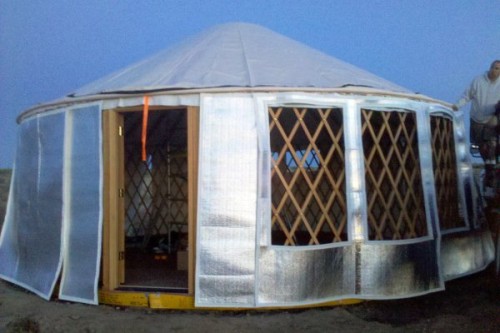

Reflective insulation will work only while your heat source is operating. Reflective insulation reflects heat back into the space. It does not contain the heated air once the heat source is turned off; however, while your heat source is operating reflective insulation is much more effective than conductive insulation.
Conductive-type insulation is up to 95 percent effective for reducing conductive heat loss; however, over 75 percent of heat loss is radiant. Reflective insulation reduces radiant heat loss by as much as 97 percent. Conductive-type insulation reduces radiant heat by only 5 to 10 percent. One test showed reflective insulation to be more than seven times as effective as R-19 conductive insulation.
Yurt Permits and Building Guidelines
A common misconception is that insulation must be thick to perform well. It is also a common mistake to consider only a material's R-Value when choosing insulation. In some cases, a thinner reflective material can provide better thermal performance than a thicker non-reflective product.
Currently, building codes for reflective insulation do not exist but insulation codes are always updating so check back often.
Your code official may understand the efficacy of your reflective insulation and be willing to figure in other factors, like your heat source. It may be possible to get an exemption if you are incorporating a renewable heat source.
Codes and Regulations for Yurt Heating
Generating your own power to run electrical or heat can sometimes reward you with an exemption. Examples are; Pellet stoves burning wood pellets made from sawdust, coconut shell, palm kernel, or biofuel; Wood stoves using dead or thinned trees; Electric heaters run by solar, wind, or water power. Exemptions and flexibility may also apply to your permitting if the yurt is only being heated seasonally or intermittently as a rental.
There is a difference between a "Portable" fabric yurt and a "Permanent" Fabric Yurt. Portable fabric yurts may have difficulty being permitted for permanent residence. One option is to provide your Code Official with the contact information of an experienced Yurt builder. Usually, they will compare notes and work out the difficulties, everyone wants to win.
Yurt Permits and Building Guidelines
When researching codes and regulations the terminology for Fabric Yurt is Membrane Covered Frame Structure.
Some states use the UBC (Uniform Building Code) for their codes and regulations when inspecting yurt construction. Many states, provinces, and countries currently use the ICC (International Code Council) code books. These books consist of the Commercial International Building Code (IBC) and the International Residential Code (IRC). There are also sub-codes, such as the International Energy Conservation Code, which adds to and modifies the general code books.
Section 104 of the 2003 IBC (commercial code) states; The duties of building officials are the same in the commercial and residential codes; Section 3102 on Membrane Structures exists only in the commercial code; it defines the category for the residential code as well; It also defines fabric yurt as "membrane-covered frame structure."
Check snow load, seismic rating, wind speed, and fire safety, at your yurt's construction site. To get a permit, a yurt may have to meet requirements. This is dependent on location and the information that has to come from the local code official. Other requirements like egress and occupancy are dependent on the use of the yurt (e.g., residential or commercial).
2003 INTERNATIONAL BUILDING CODE SECTION 104: DUTIES AND POWERS OF BUILDING OFFICIAL
104.10 Modifications.Wherever there are practical difficulties involved in carrying out the provisions of this code, the building official shall have the authority to grant modifications for individual cases, upon application of the owner or owner's representative, provided the building official shall first find that special individual reason makes the strict letter of this code impractical and the modification is in compliance with the intent and purpose of this code and that such modification does not lessen health, accessibility, life and fire safety, or structural requirements. The details of action granting modifications shall be recorded and entered in the files of the department of building safety. 104.11 Alternative materials, design and methods of construction and equipment. The provisions of this code are not intended to prevent the installation of any material or to prohibit any design or method of construction not specifically prescribed by this code, provided that any such alternative has been approved. An alternative material, design or method of construction shall be approved where the building official finds that the proposed design is satisfactory and complies with the intent of the provisions of this code, and that the material, method or work offered is, for the purpose intended, at least the equivalent of that prescribed in this code in quality, strength, effectiveness, fire resistance, durability and safety.
SECTION 3102 MEMBRANE STRUCTURES
3102.1 General. The provisions of this section shall apply to air-supported, air-inflated, membrane-covered cable and membrane-covered frame structures, collectively known as membrane structures, erected for a period of 180 days or longer. Those erected for a shorter period of time shall comply with the International Fire Code.
3102.2 Definitions. The following words and terms shall, for the purposed of this section and as used elsewhere in this code, have the meanings shown herein: MEMBRANE-COVERED FRAME STRUCTURE. A non-pressurized building wherein the structure is composed of a rigid framework to support a tensioned membrane which provides the weather barrier.
3102.7 Engineering design.The structure shall be designed and constructed to sustain dead loads; loads due to tension or inflation; live loads including wind, snow or flood and seismic loads.
2003 INTERNATIONAL ENERGY CONSERVATION CODE
101.3 Intent. The provisions of this code shall regulate the design of building envelopes for adequate thermal resistance and low air leakage. It is intended that these provisions provide flexibility to permit the use of innovative approaches and techniques to achieve effective utilization of energy.
103.1 General.The provisions of this code are not intended to prevent the use of any material, method of construction, design or insulating system not specifically prescribed herein, provided that such construction, design or insulating system has been approved by the code official as meeting the intent of the code.
Information on codes and regulations for yurt construction exist all over the web, as well as permits and building guidelines; and other appropriate construction technology, see this excellent article by David Eisenberg for more yurt information
For more current yurt information, check out YurtForum.com, or Becky Kemery's website, YurtInfo.org.
Enjoy the journey!
Code & Regulations FAQ
What permits do I need to build a yurt?
The permits vary by location, but they typically involve meeting local building codes for snow load, wind speed, and fire safety.
Do yurts need to meet residential building codes?
Yes, if used as a residence, yurts must meet local residential codes, including insulation, fire ratings, and structural requirements.
Can I build a yurt in high-wind areas?
Yes, yurts are designed to handle wind, but it’s essential to meet local wind resistance regulations.
How do snow load requirements affect yurt construction?
In areas with heavy snow, yurts need to meet specific snow load requirements, often needing reinforced designs.
Are there fire safety regulations for yurts?
Yurts must meet local fire safety codes, especially regarding fabric fire retardancy and the use of stoves or heaters.



